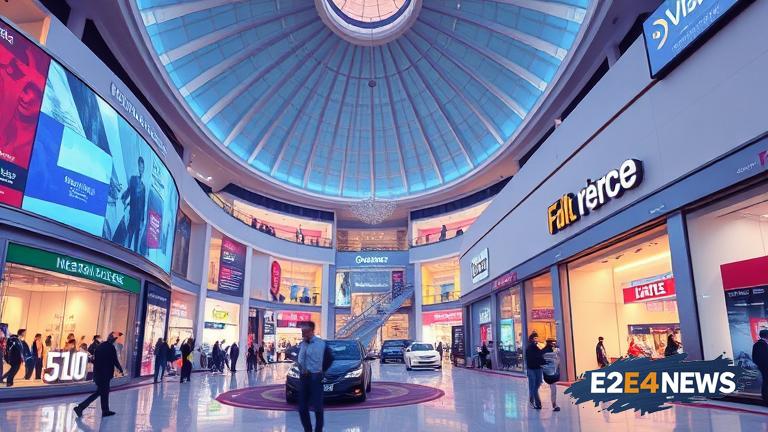The Indian retail market has witnessed a notable shift in the second quarter of 2025, with mall leases experiencing a significant surge. This increase can be attributed to various factors, including the growing demand for experiential retail and the convenience offered by malls. On the other hand, high street demand has declined by 26% during the same period, indicating a change in consumer preferences. The decline in high street demand can be linked to the rising costs of operating standalone stores, as well as the limited parking and accessibility issues often associated with high street locations. In contrast, malls offer a more comprehensive shopping experience, with a wide range of brands, dining options, and entertainment facilities under one roof. The surge in mall leases is also driven by the increasing popularity of omnichannel retail, which enables brands to integrate their online and offline presence seamlessly. Furthermore, malls provide a more secure and controlled environment, which is becoming increasingly important for retailers and consumers alike. The Indian government’s efforts to boost the retail sector, including the introduction of policies aimed at simplifying the process of doing business, have also contributed to the growth of mall leases. Additionally, the rising disposable incomes and changing lifestyles of Indian consumers have led to an increase in demand for premium retail experiences, which malls are well-equipped to provide. The shift towards mall-based retail is also expected to drive job creation and economic growth in the country. However, the decline in high street demand is likely to have a negative impact on small, independent retailers who rely heavily on foot traffic. To remain competitive, these retailers will need to adapt to the changing market dynamics and explore alternative channels, such as e-commerce and social media. The surge in mall leases is expected to continue in the coming quarters, driven by the growing demand for retail space and the limited supply of quality mall stock. As a result, retailers are advised to reassess their strategies and consider the benefits of mall-based retail, including increased foot traffic and brand visibility. The Indian retail market is expected to continue evolving, with a focus on experiential retail, omnichannel integration, and convenience. The growth of mall leases is a testament to the changing consumer preferences and the need for retailers to adapt to these shifts. In the coming years, the Indian retail market is likely to witness a significant transformation, with malls emerging as the preferred destination for retailers and consumers alike. The decline in high street demand is a wake-up call for retailers to rethink their strategies and explore alternative channels. The surge in mall leases is a positive indicator for the Indian economy, with the potential to drive job creation, economic growth, and investment in the retail sector. As the Indian retail market continues to evolve, it is essential for retailers to stay ahead of the curve and adapt to the changing market dynamics. The growth of mall leases is expected to have a positive impact on the Indian economy, with the potential to attract foreign investment and drive economic growth. The Indian government’s efforts to boost the retail sector are expected to continue, with a focus on simplifying the process of doing business and attracting investment. The surge in mall leases is a significant development for the Indian retail market, with the potential to drive growth, job creation, and investment in the sector.
